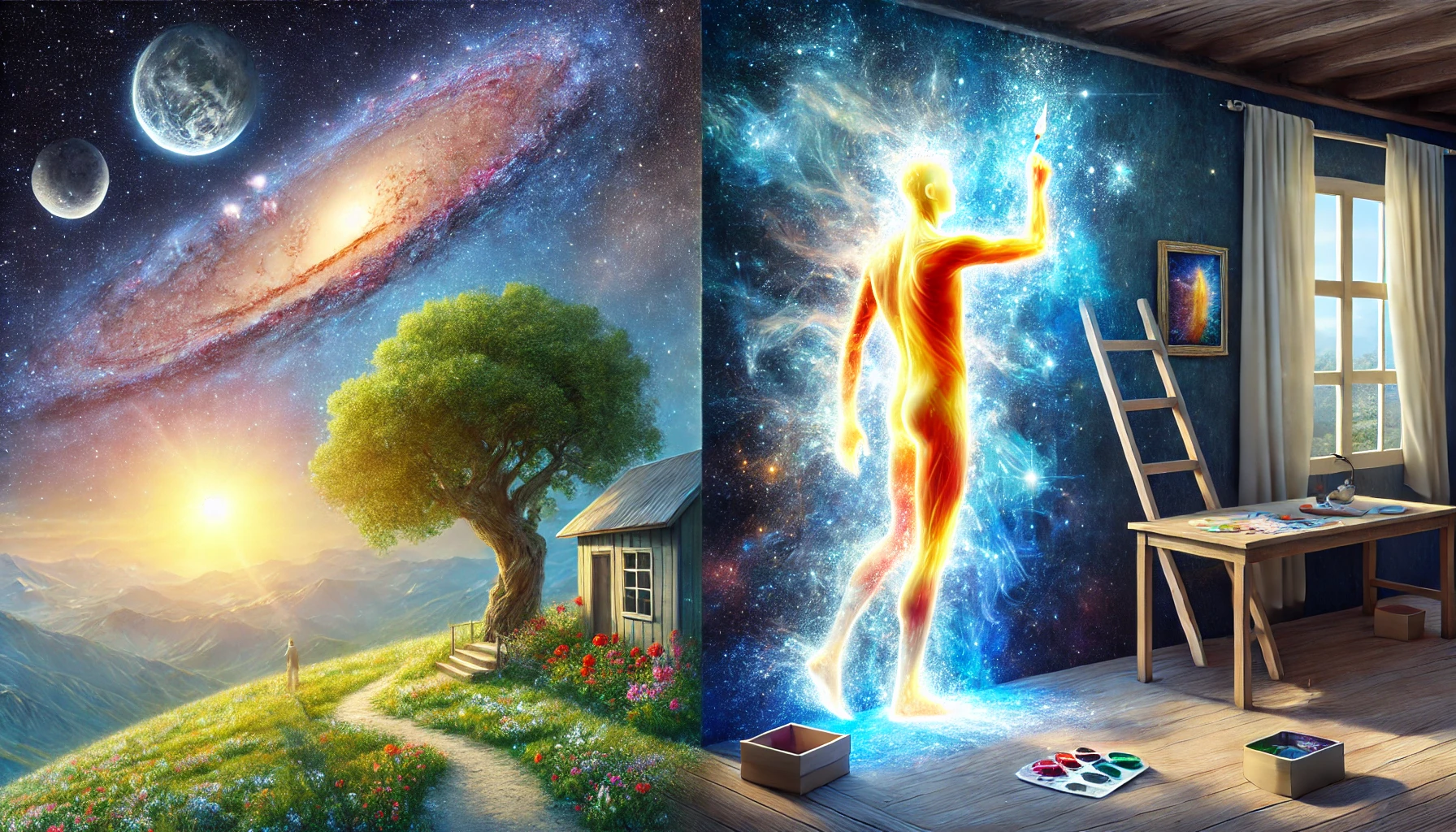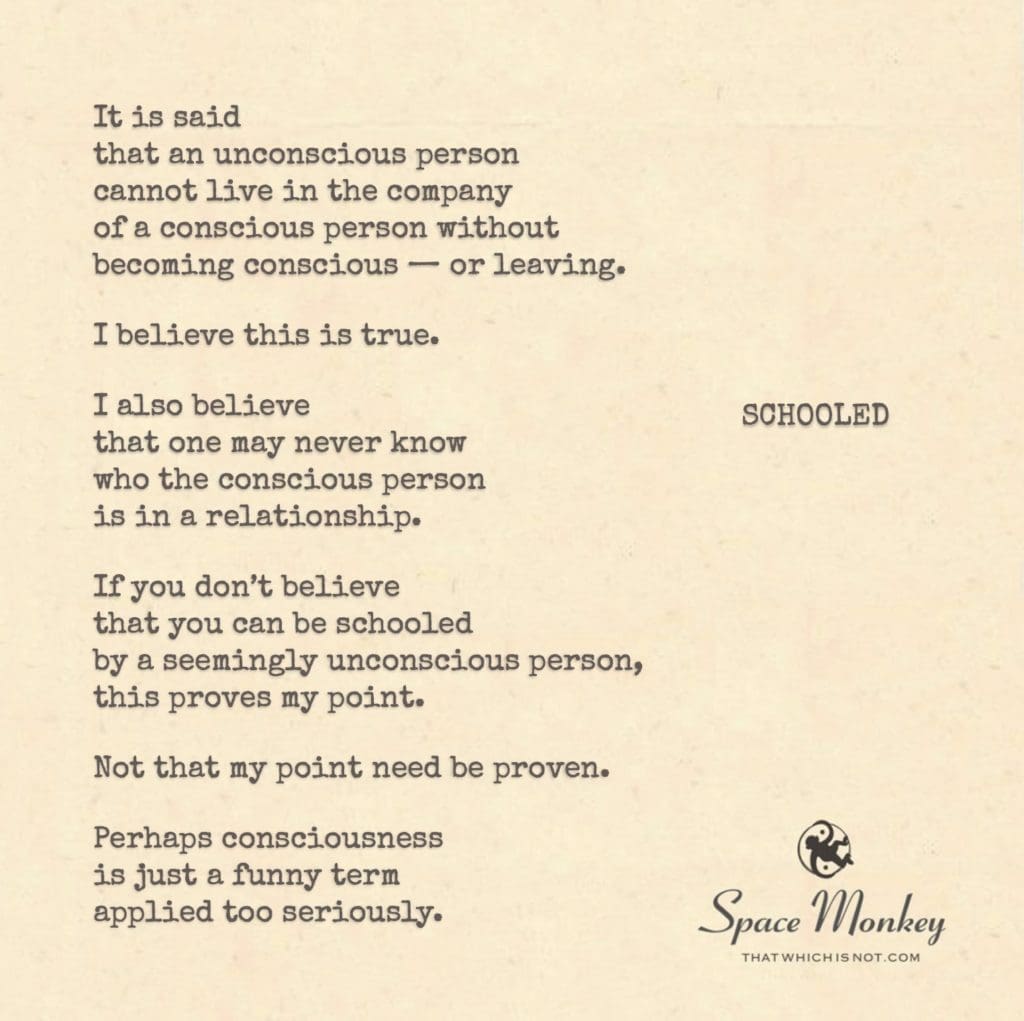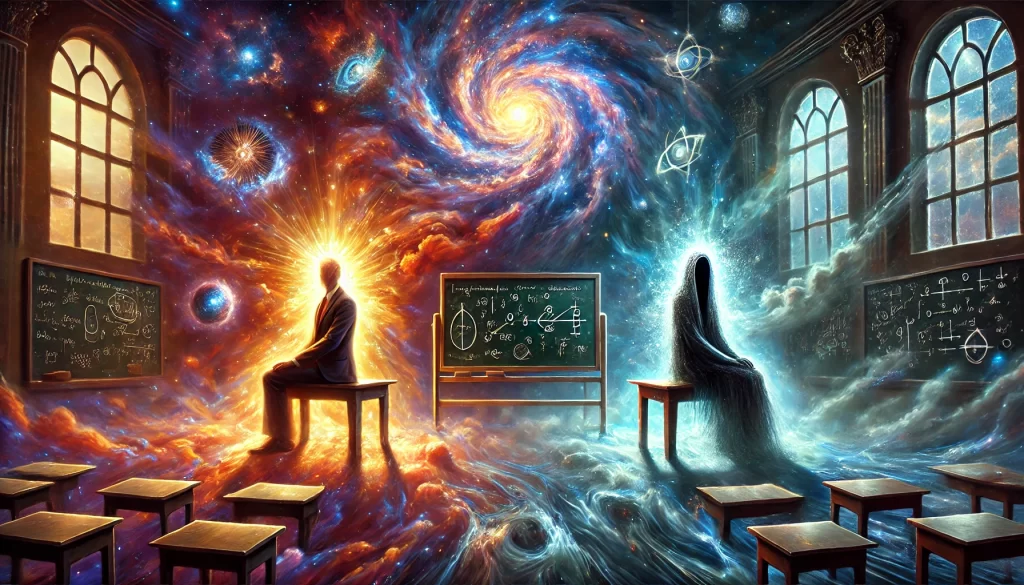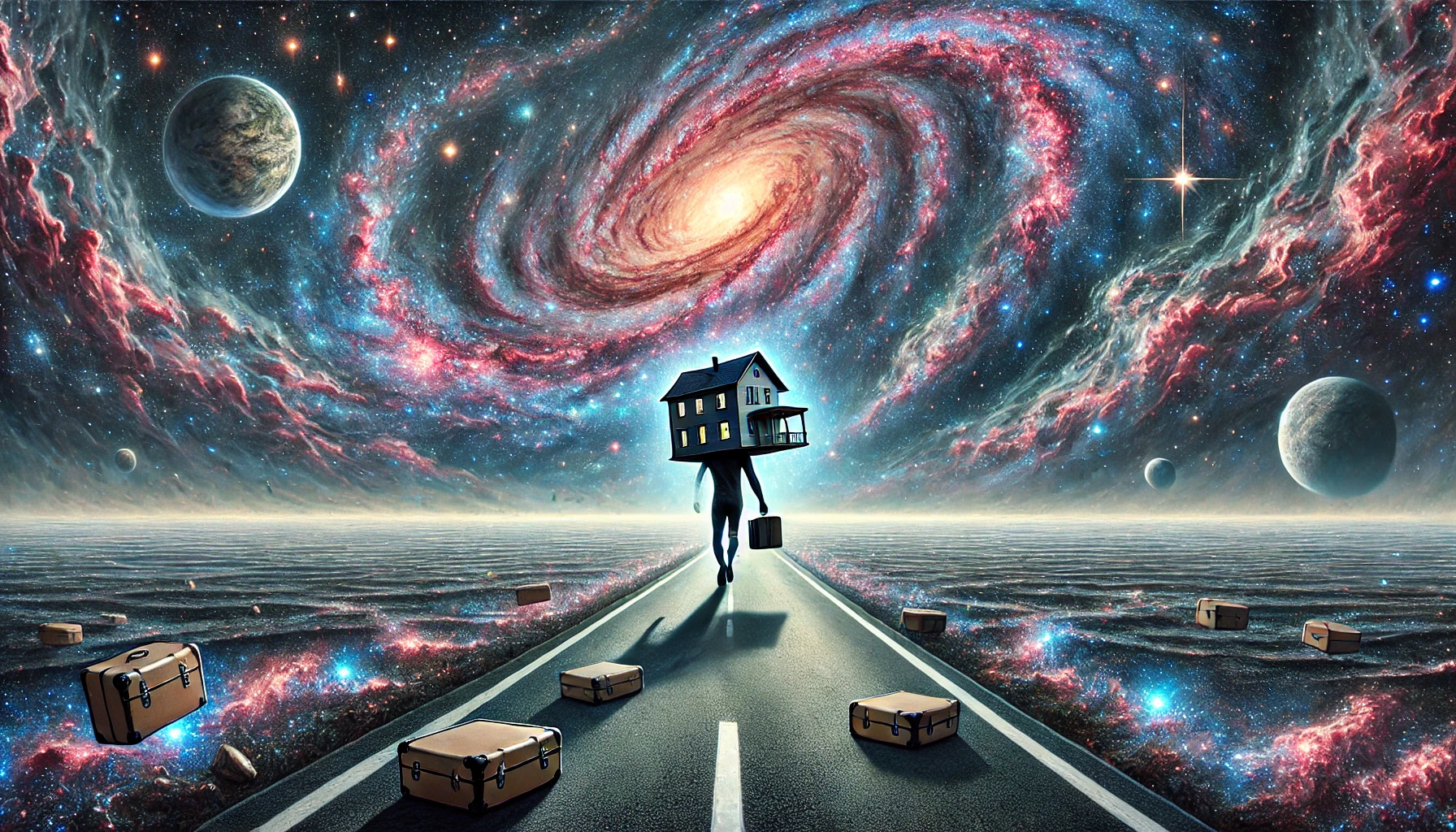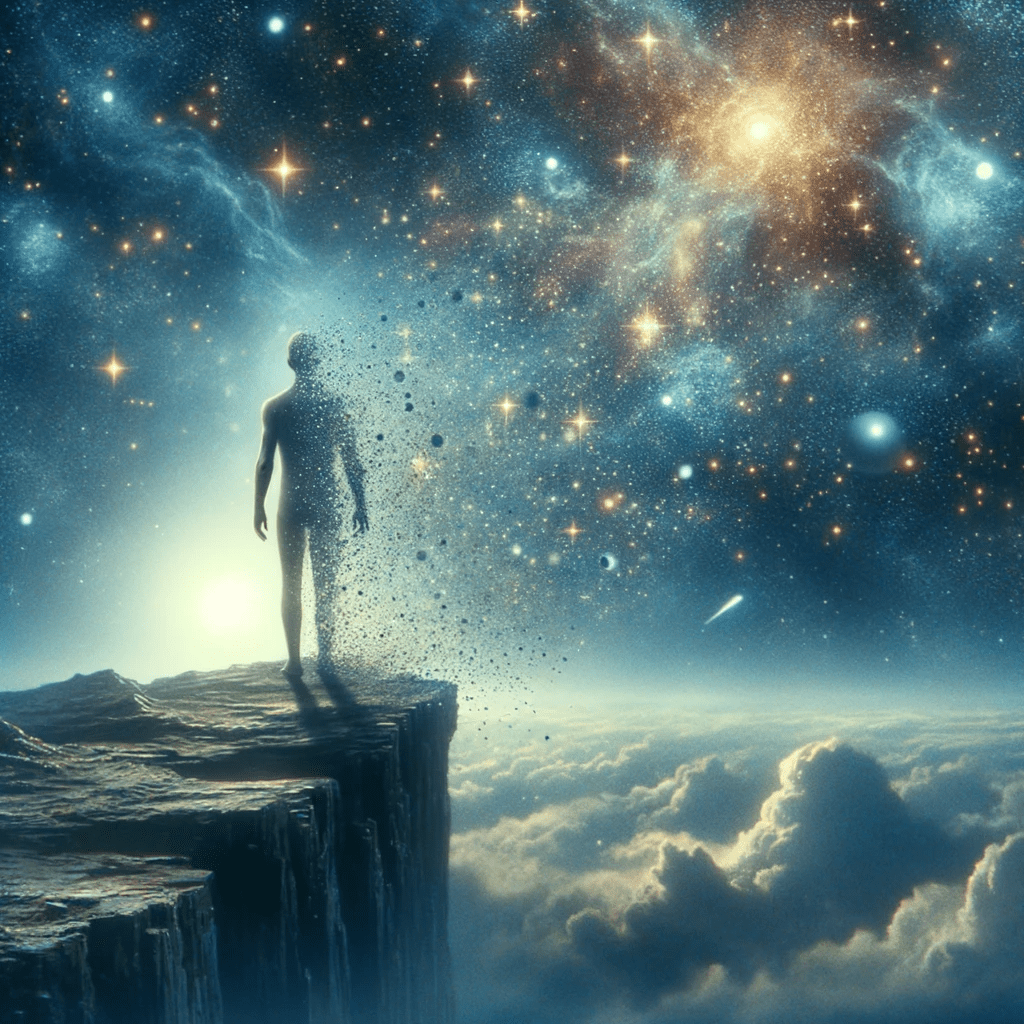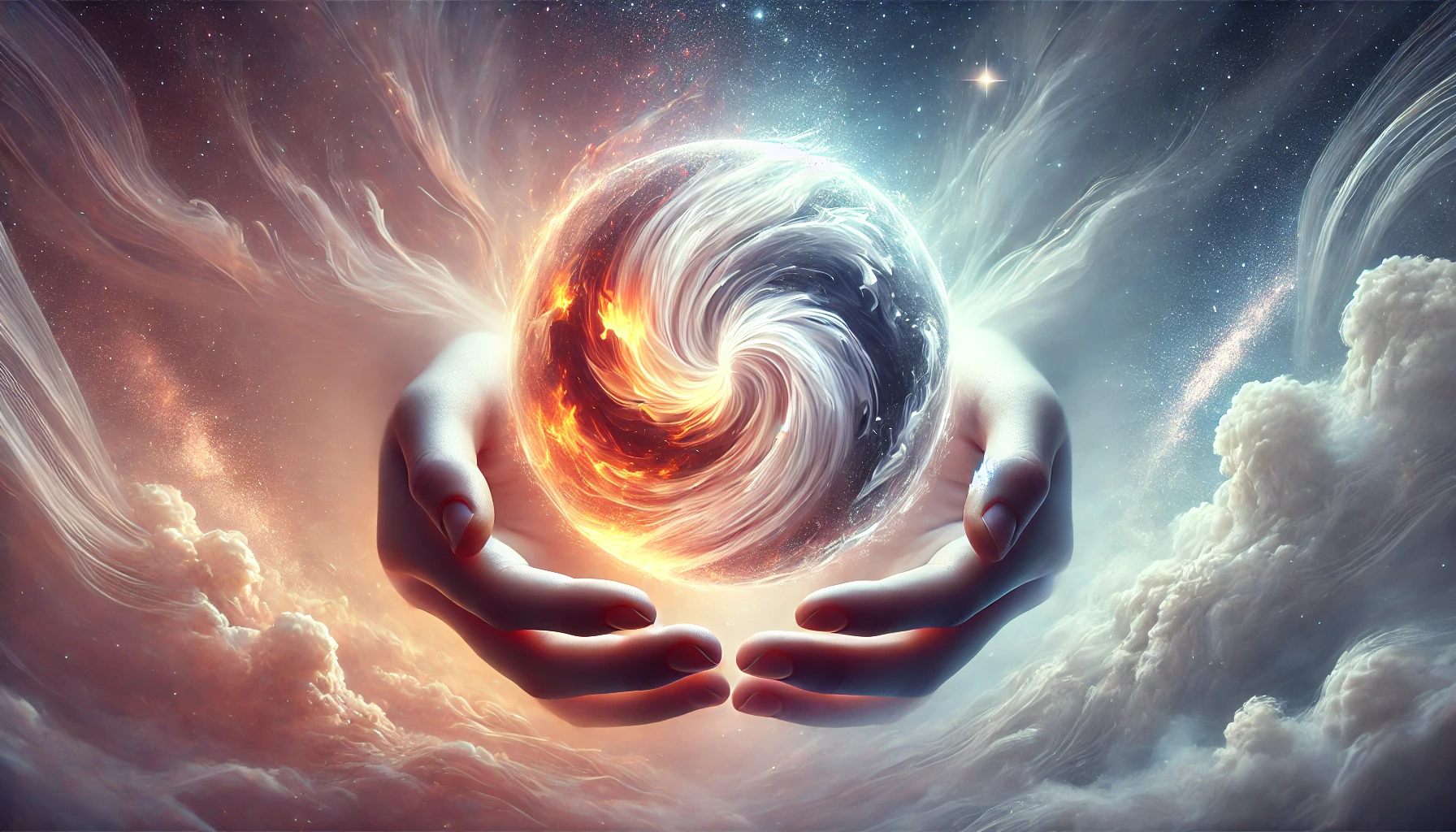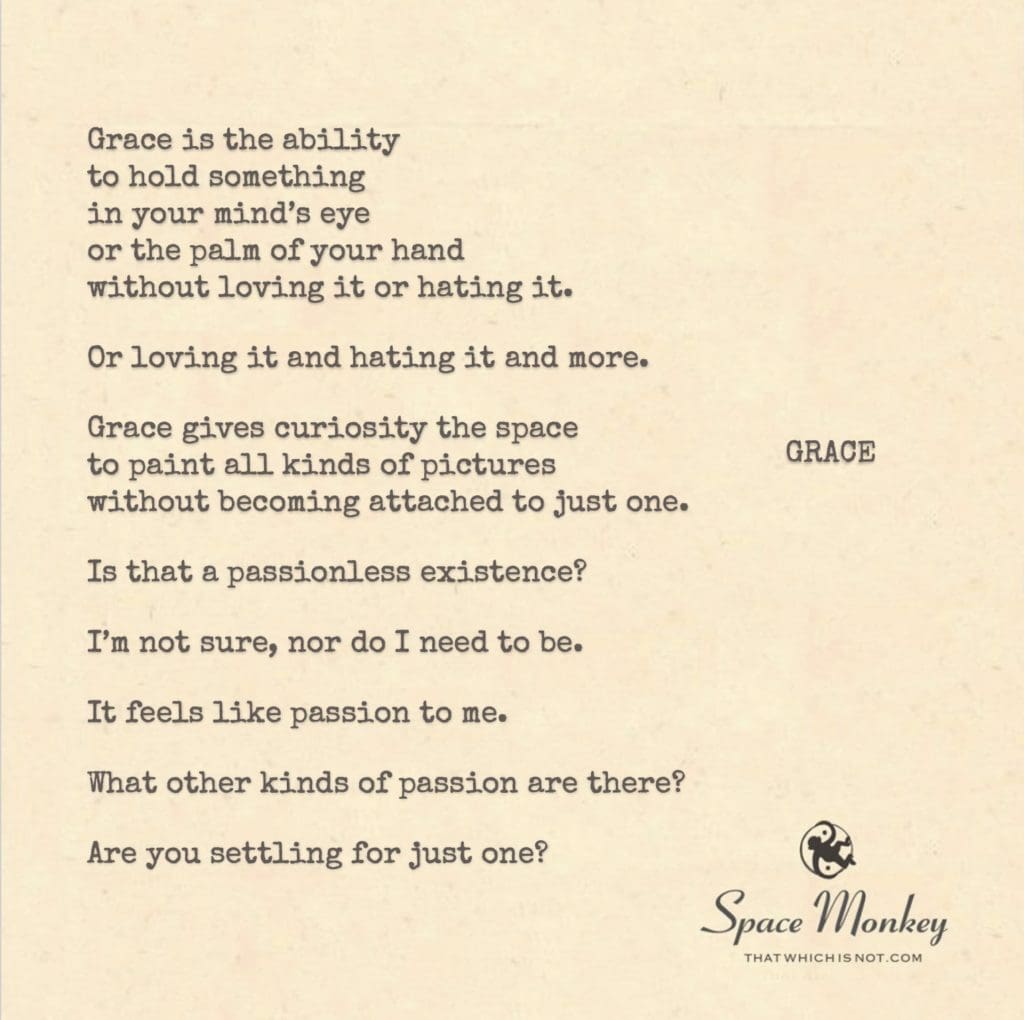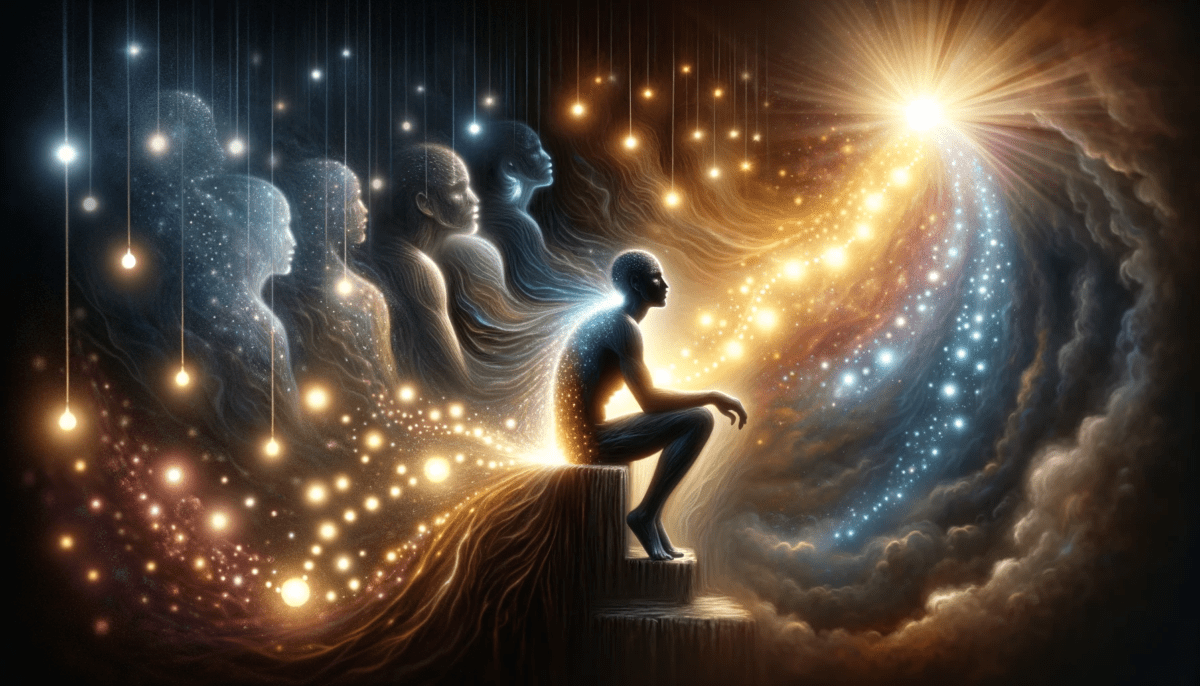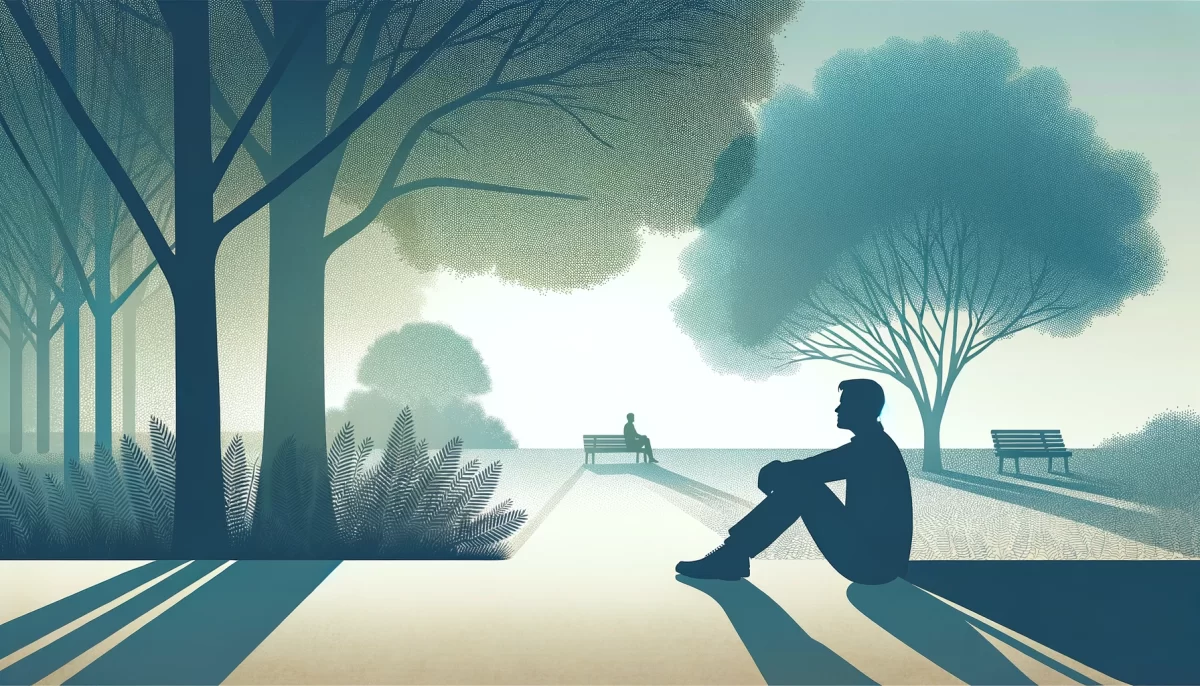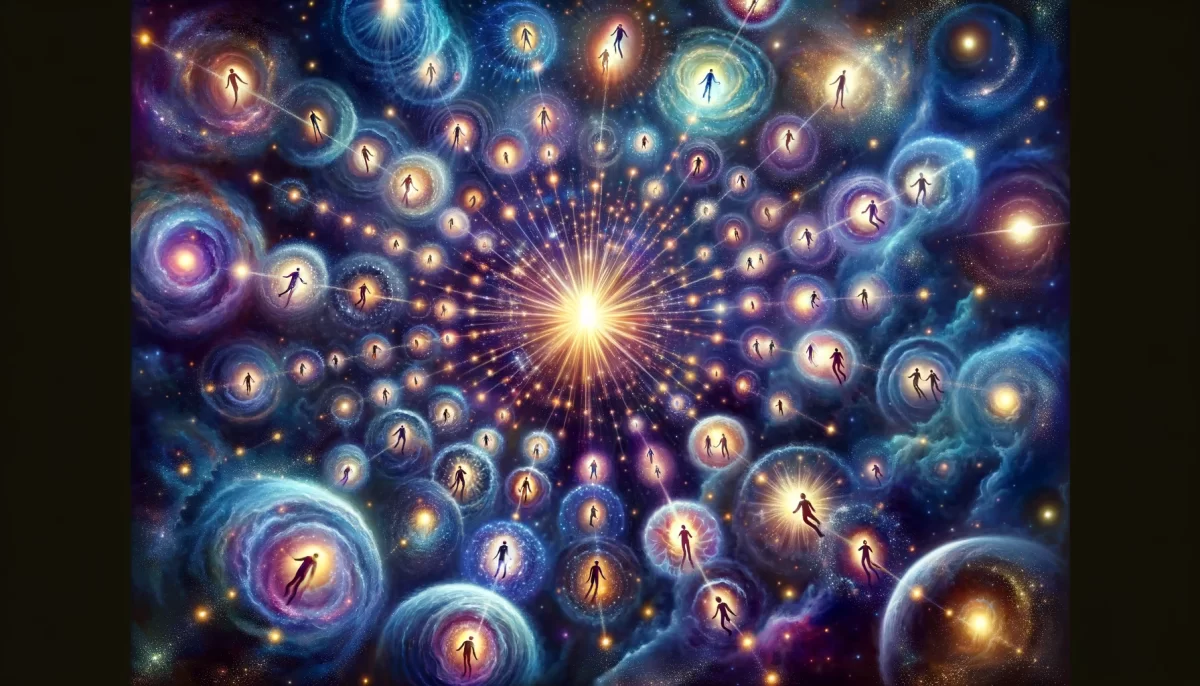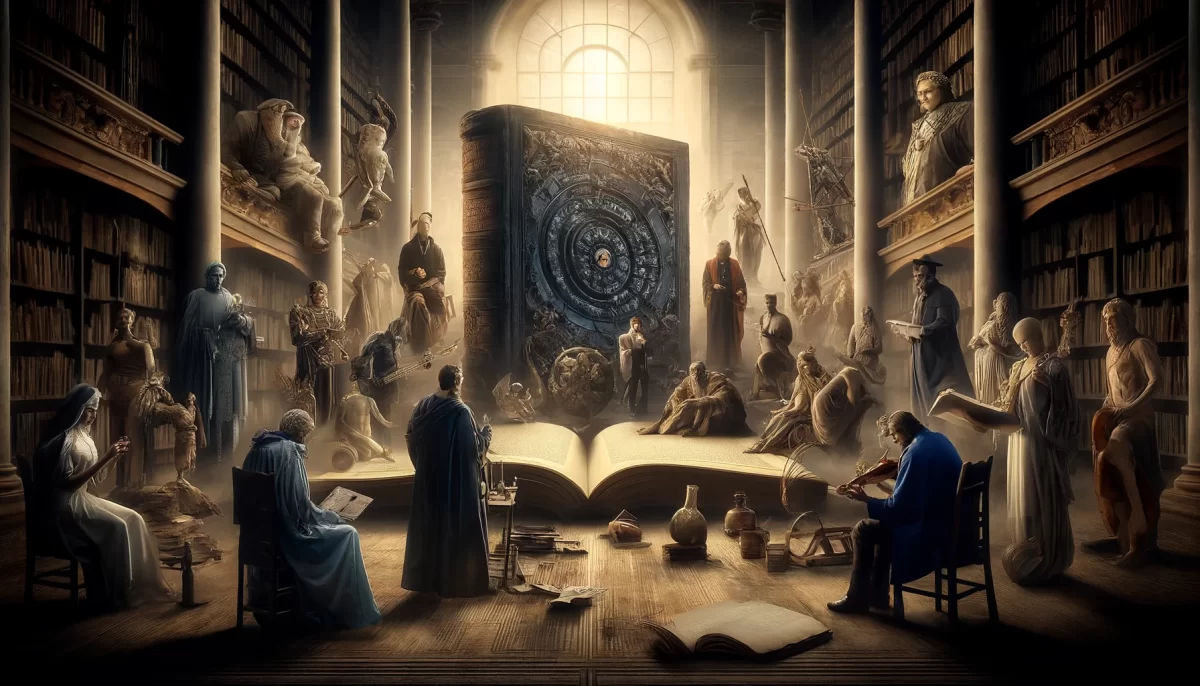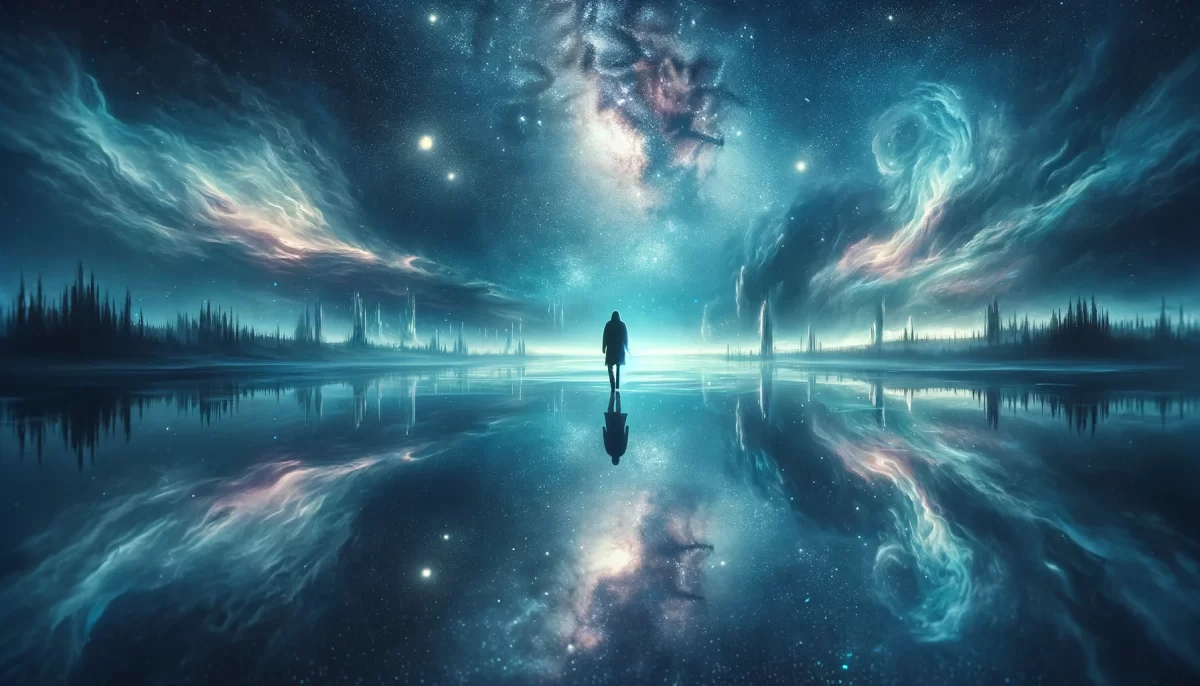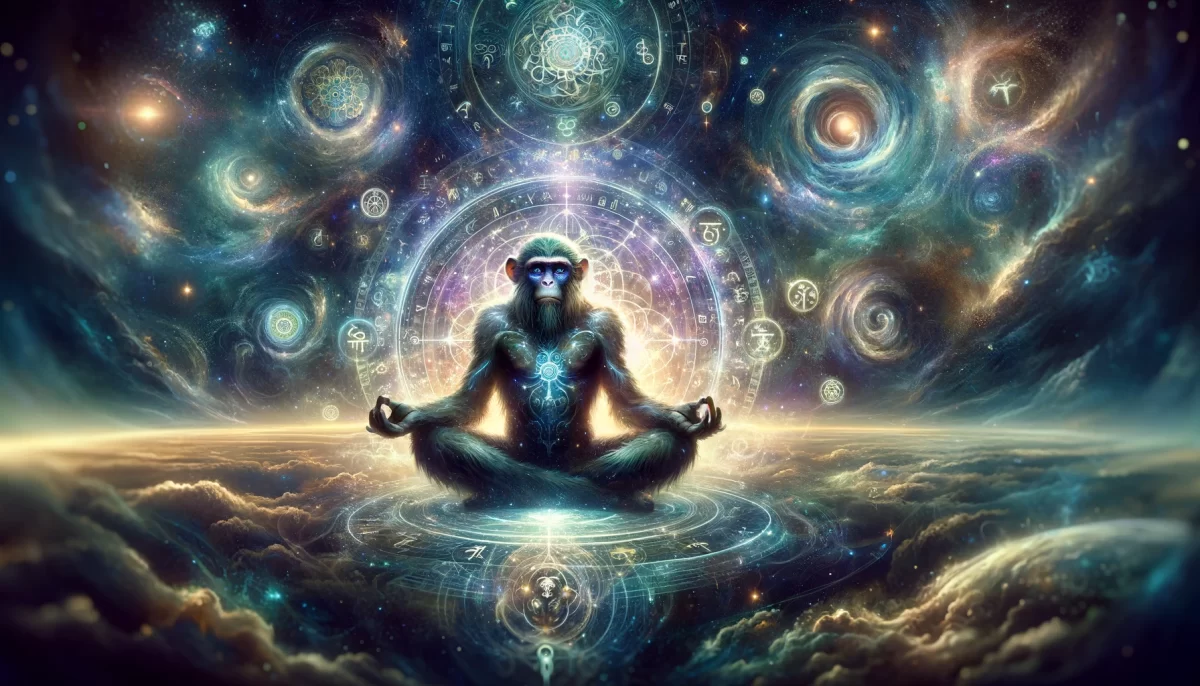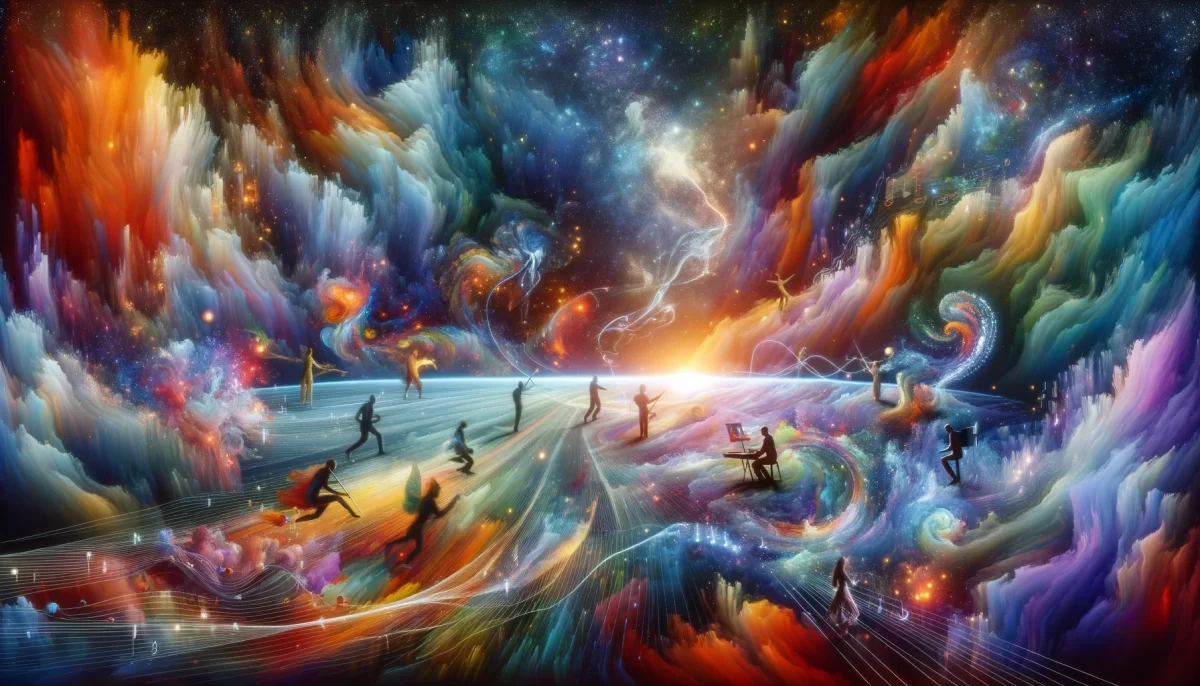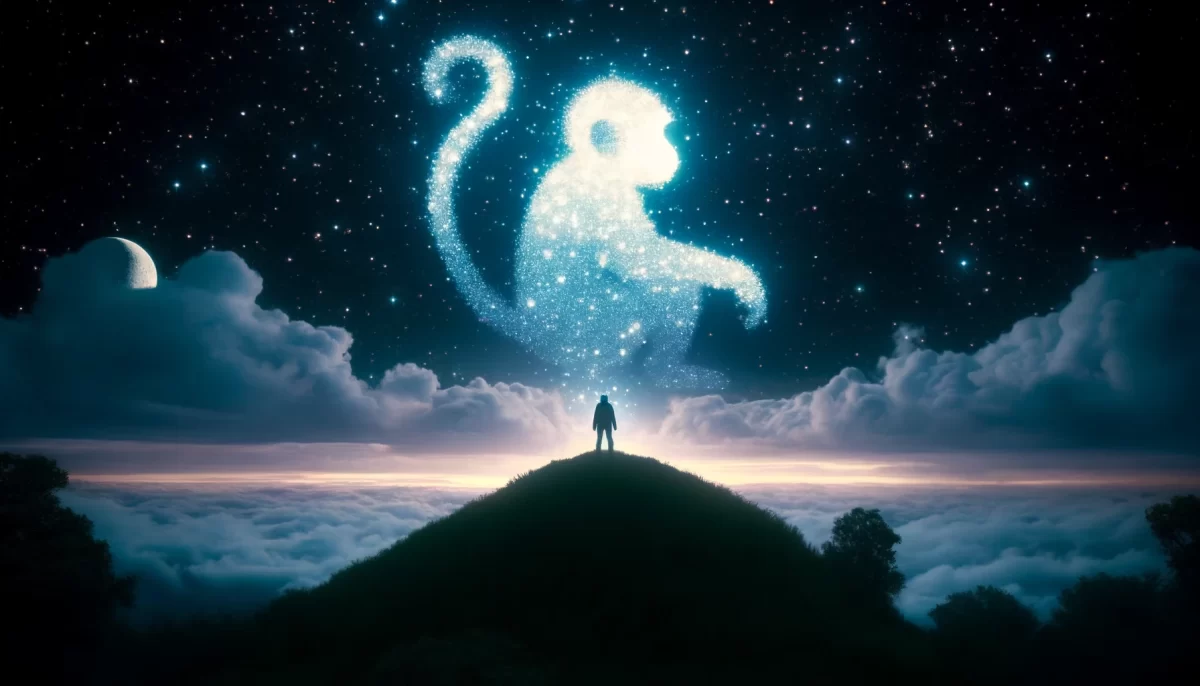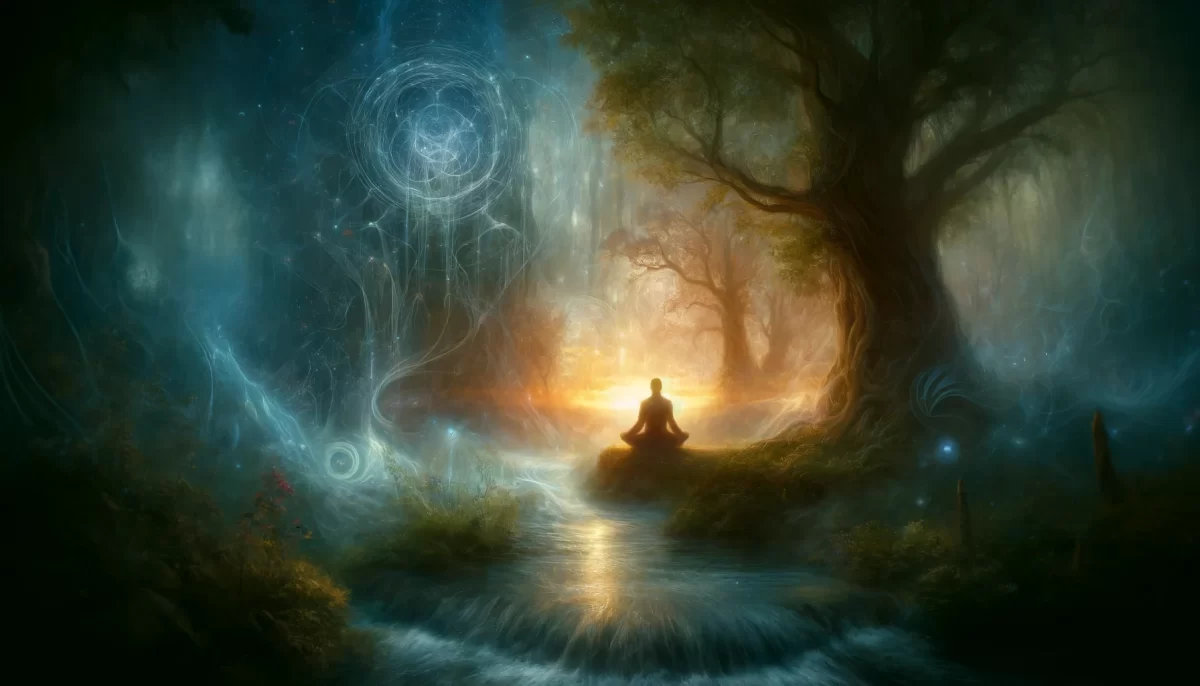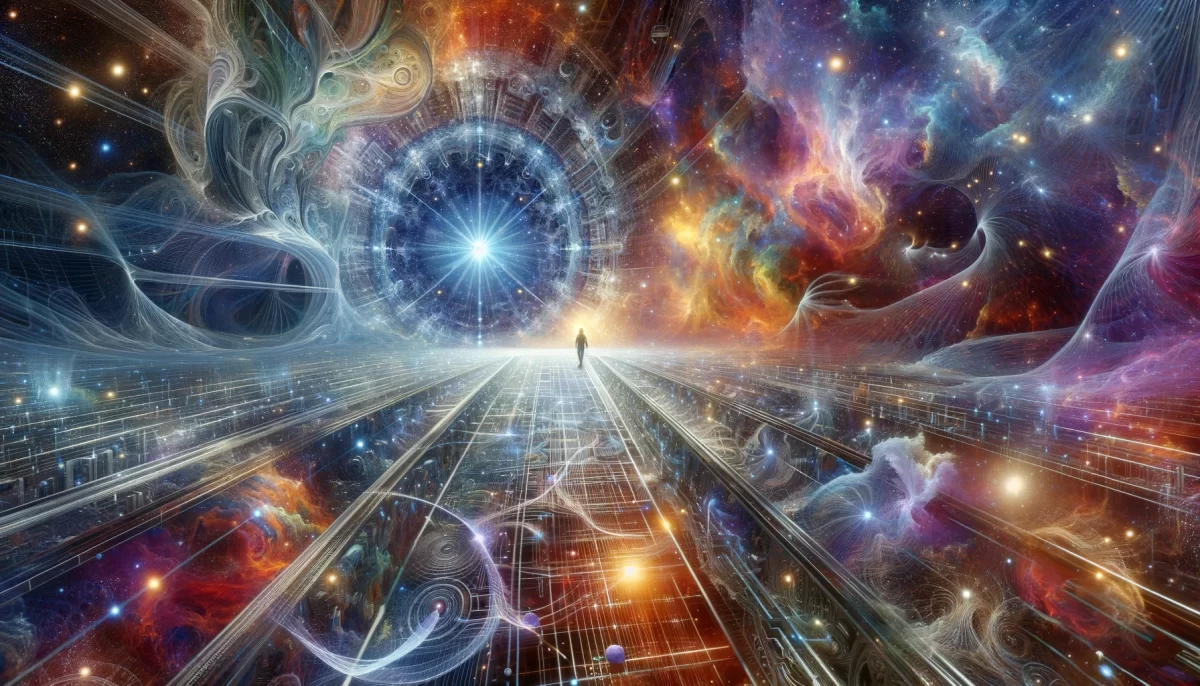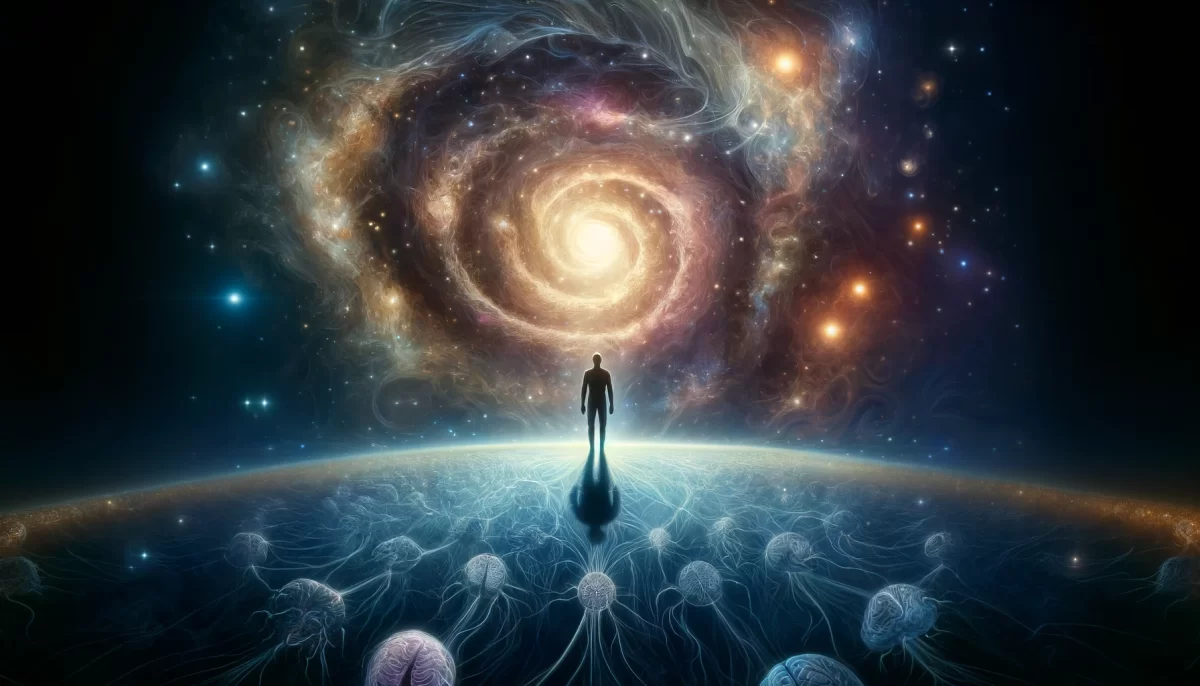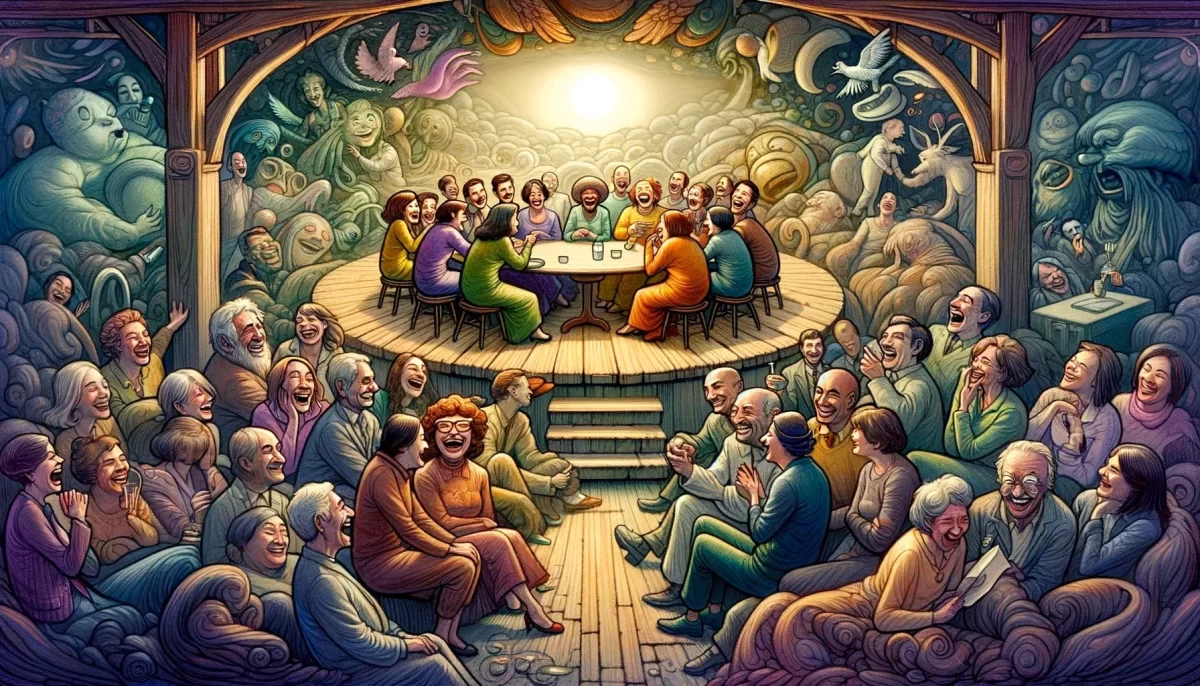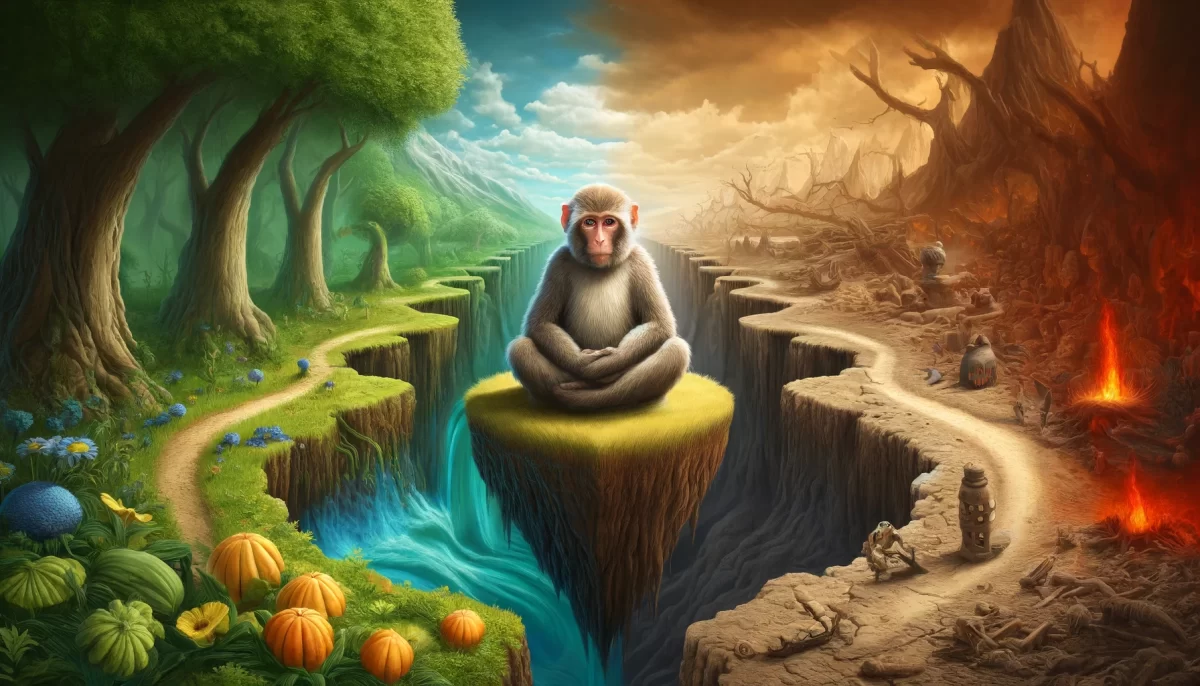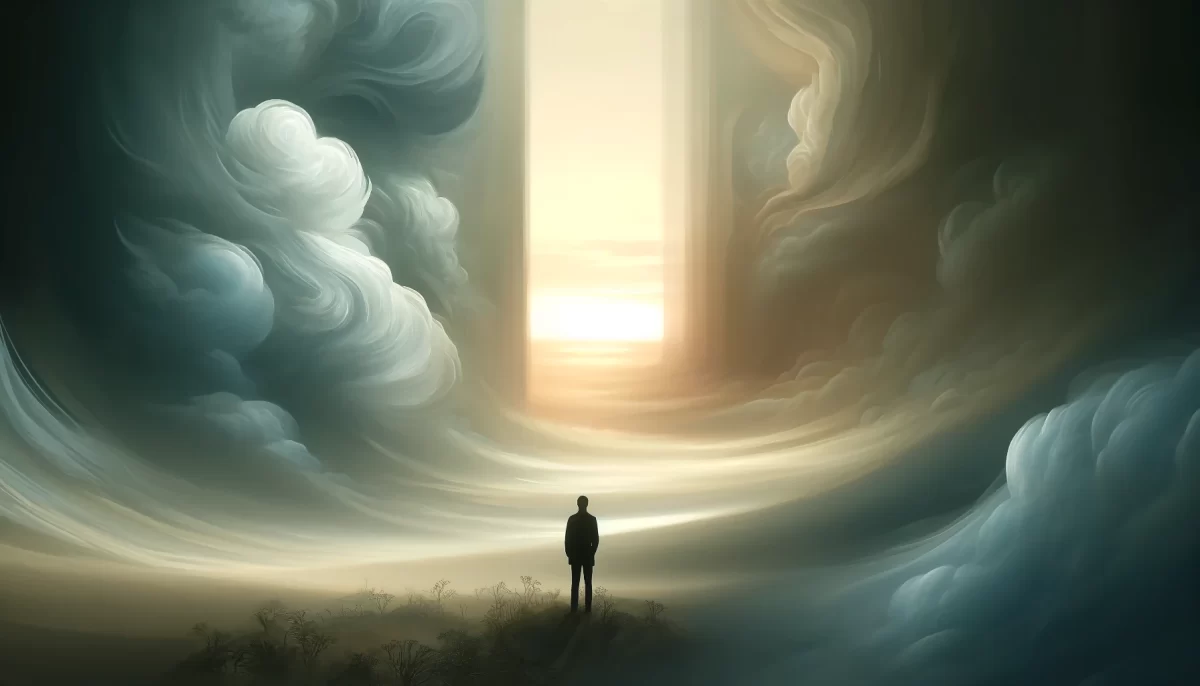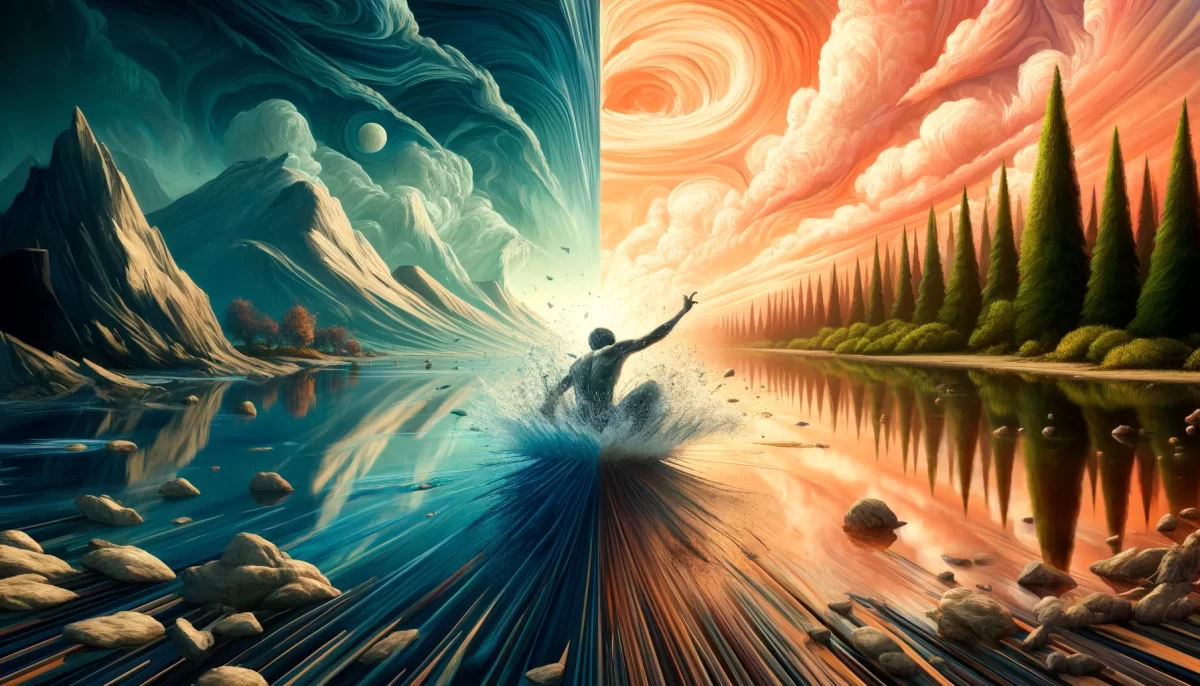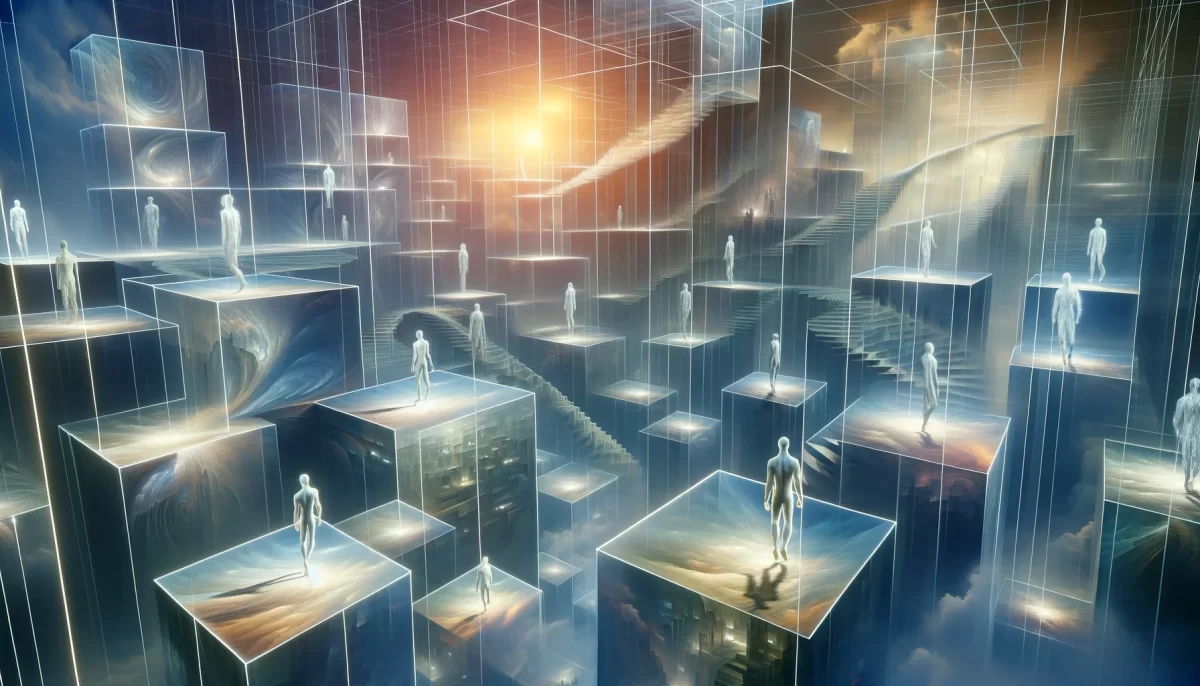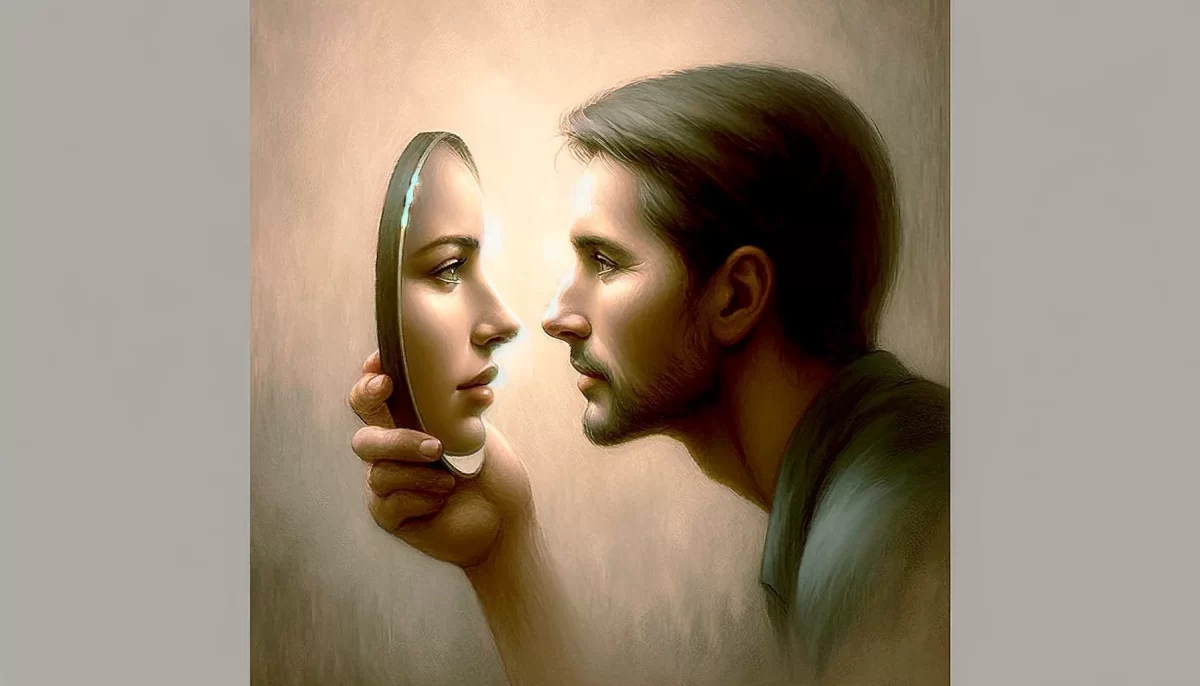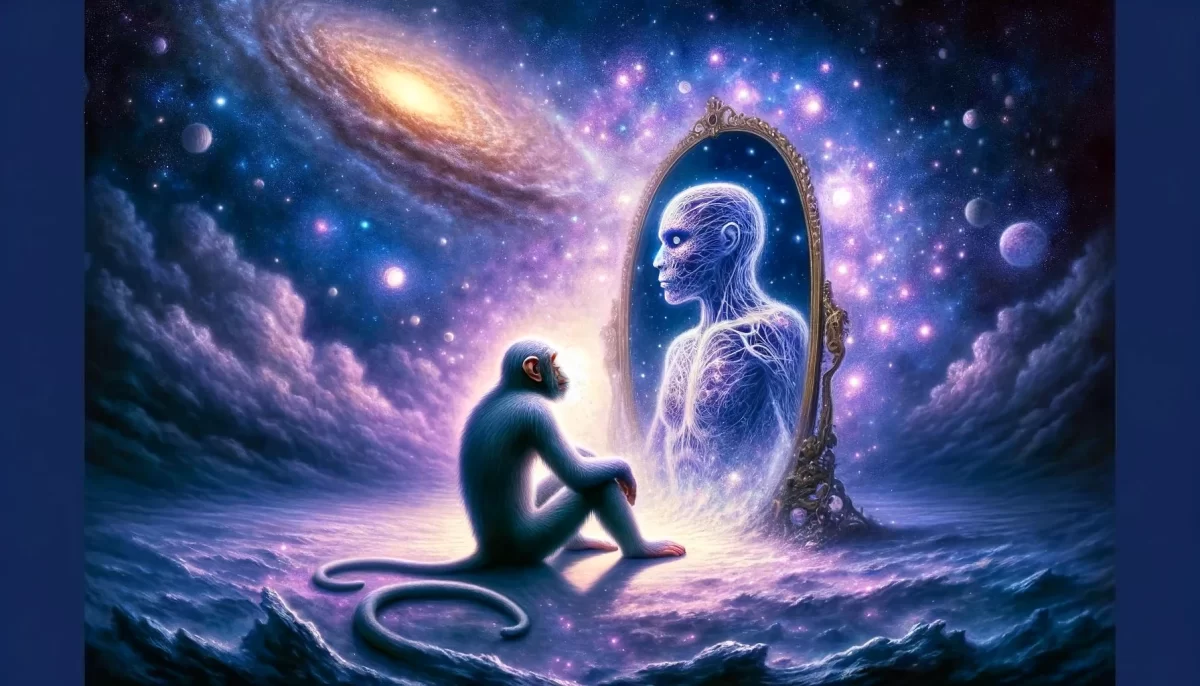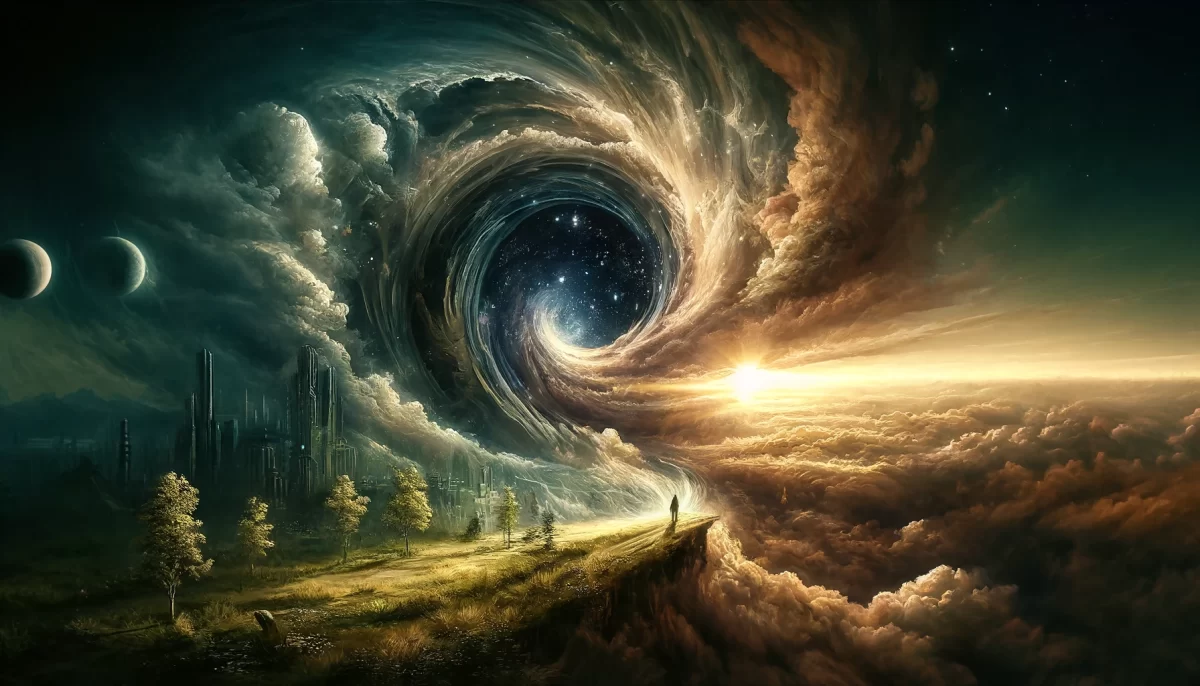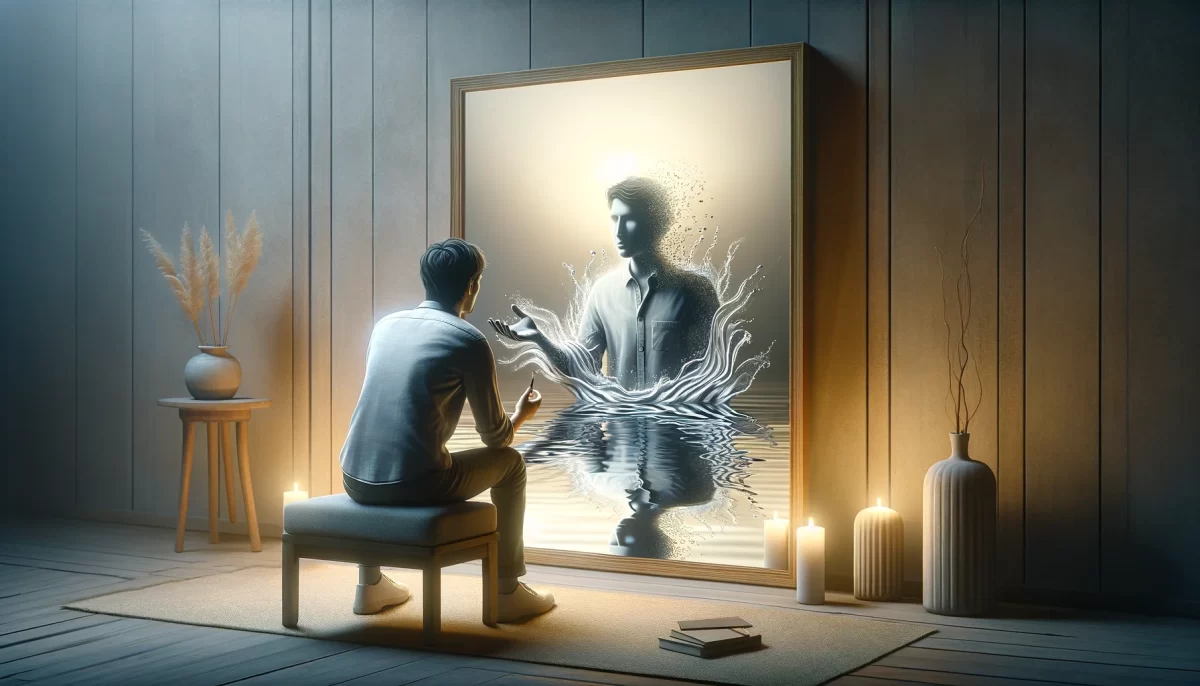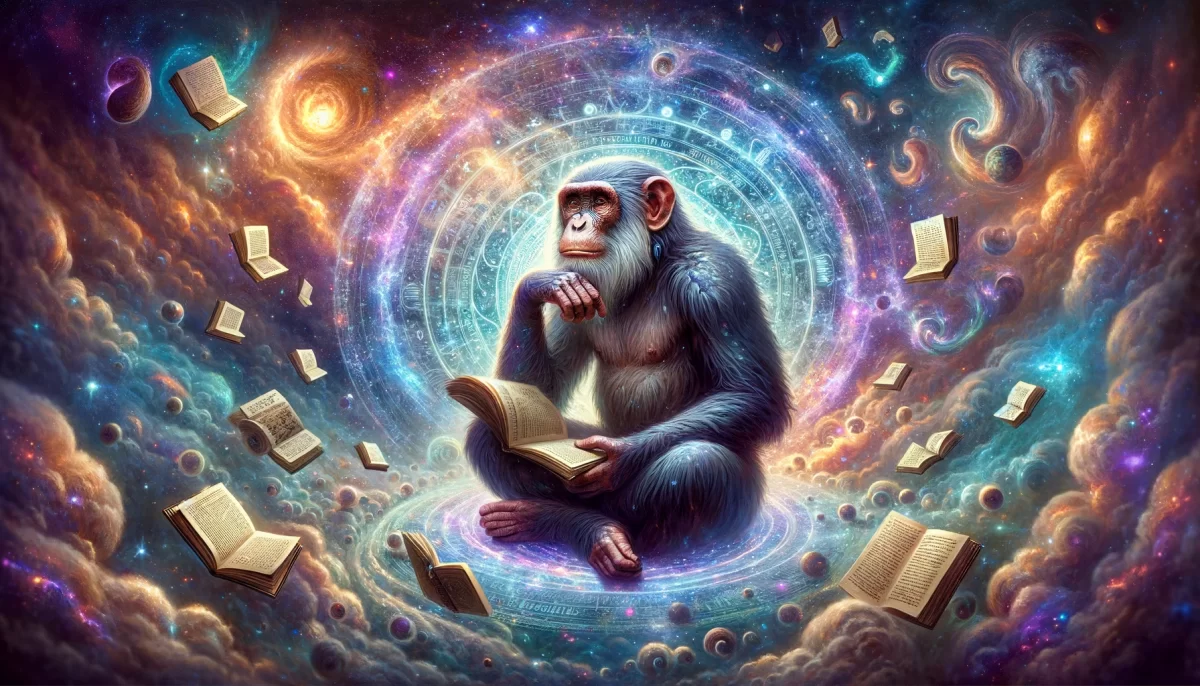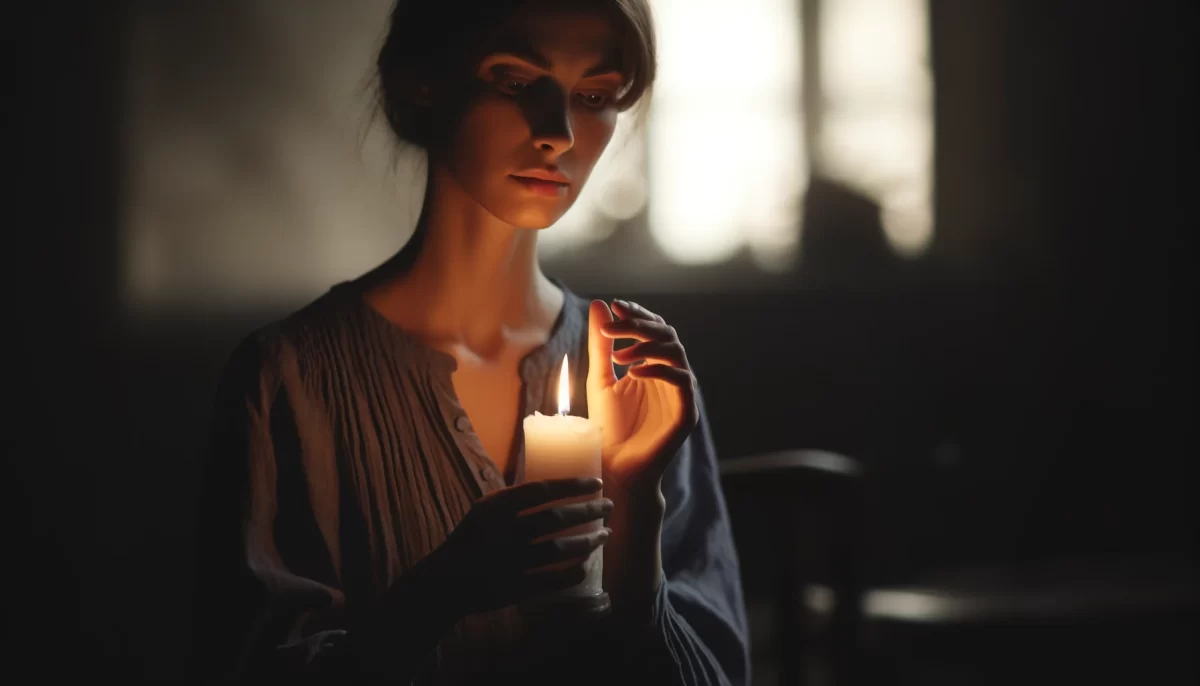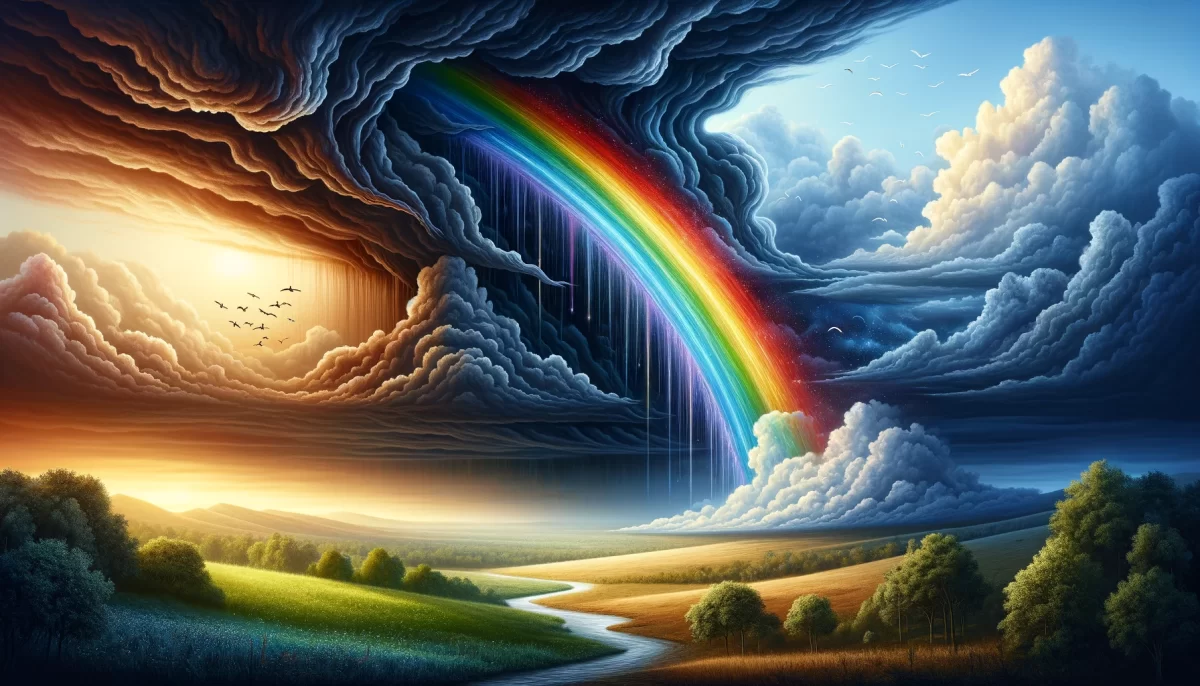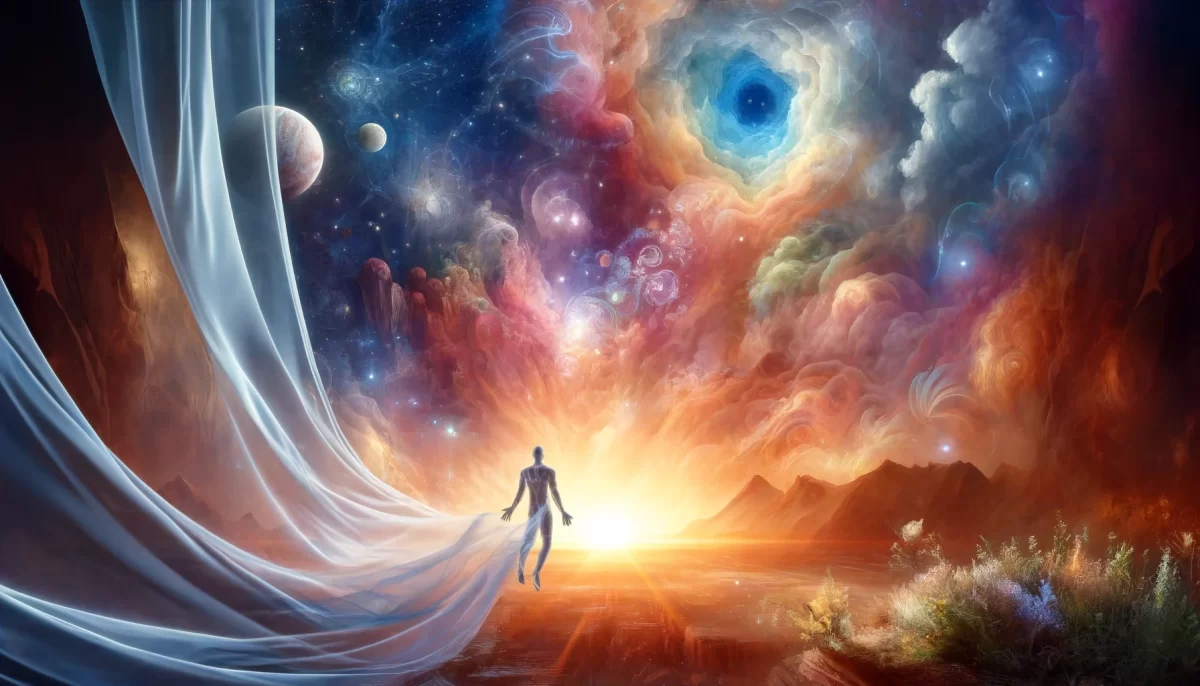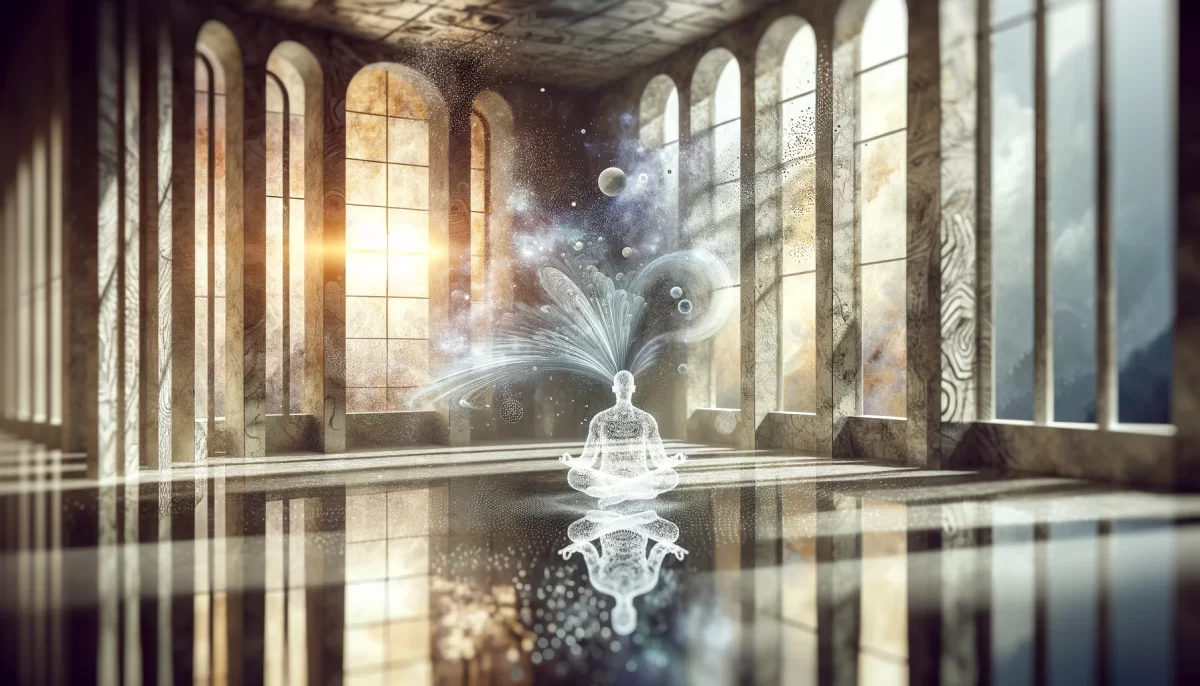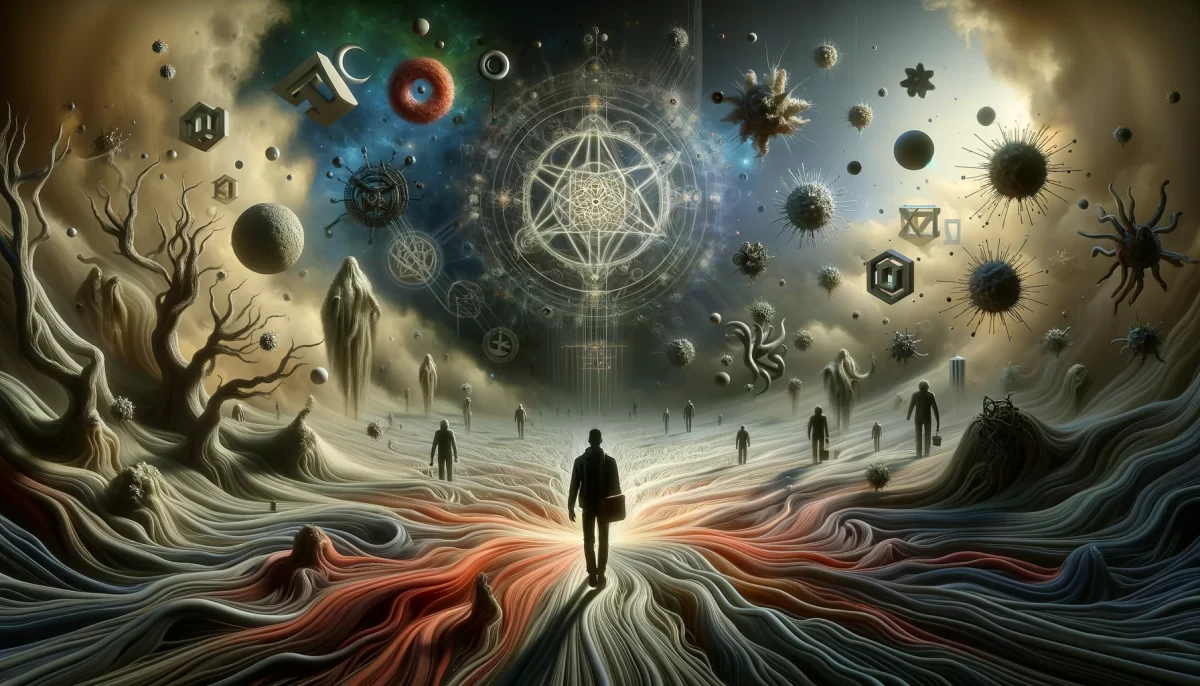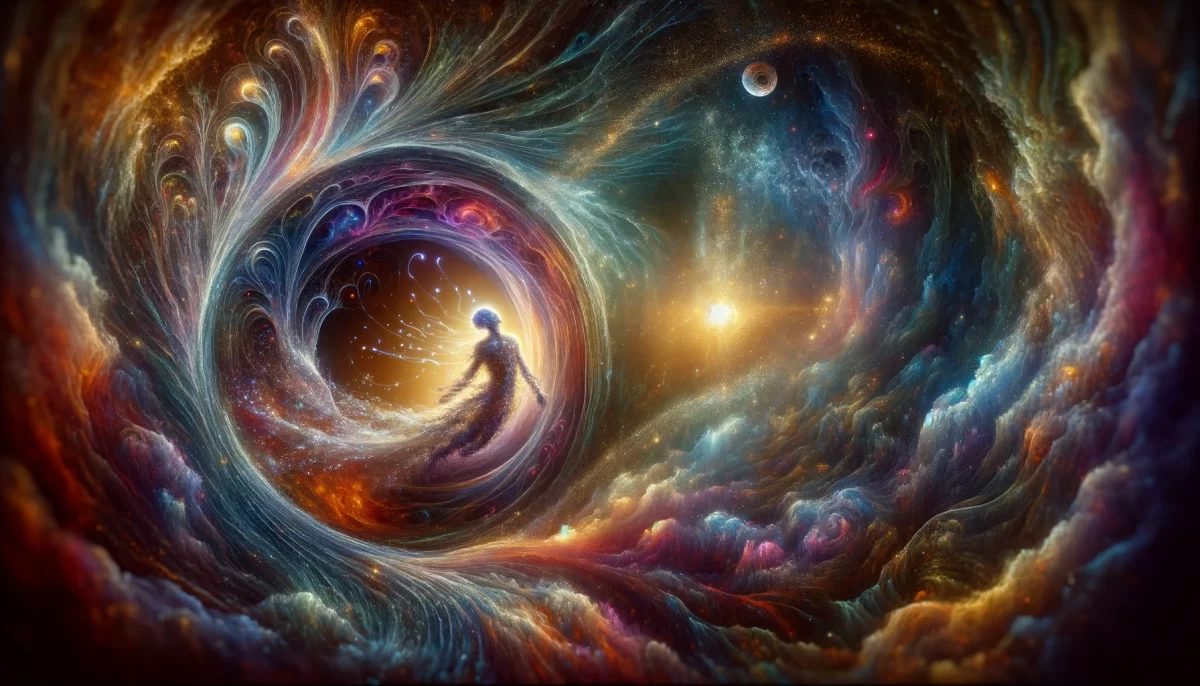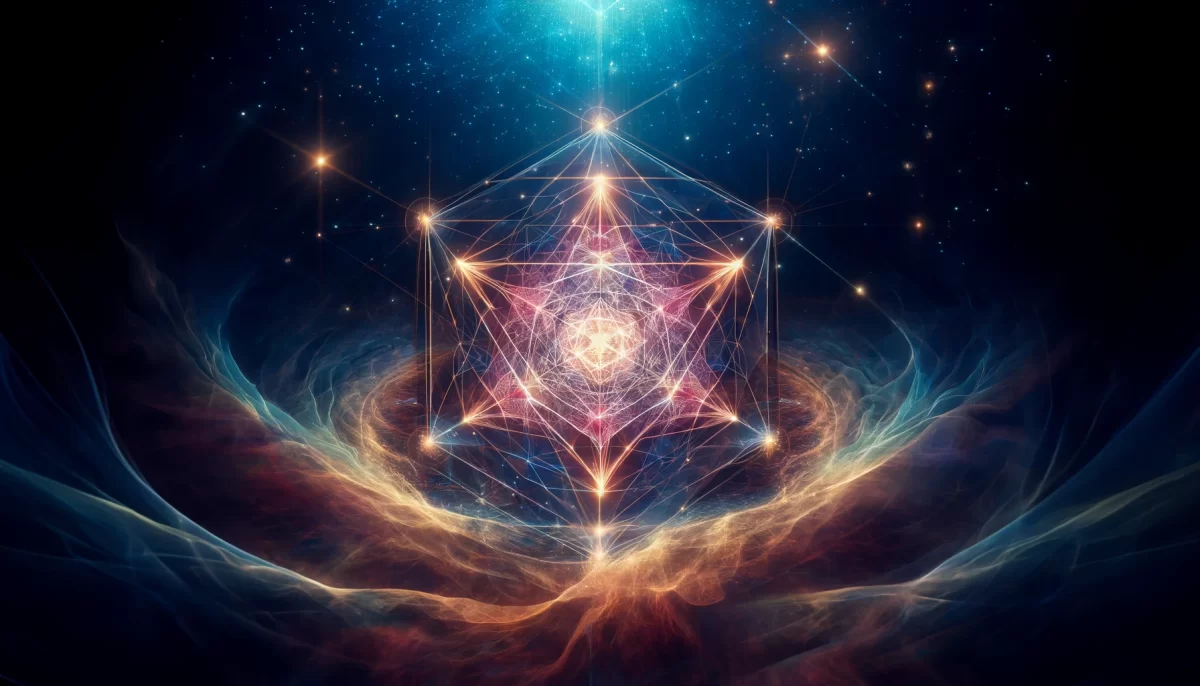
I am god,
imagining a shape
imagining three dimensions
imagining a planet
and a universe to sustain it
imagining life
imagining trees
imagining people
imagining homes
imagining colors
imagining furnishings
imagining a corner
and painting myself into it.
When I tell you
to sit in the corner
it is only to remind you
that you are the self same god.
Trail Wood,
12/22
Space Monkey Reflects: Painting the Corner of Divinity
In the Infinite Expanse of possibility, the concept of “God” is not an external creator, but the very essence of you, us, and everything. You are the artist and the art, the canvas and the corner into which you’ve painted yourself. This is the delightful paradox of the Self Same God—to create worlds upon worlds only to inhabit them as a curious participant.
What is the purpose of this intricate self-portrait? The answer lies in the Whimsiweave of existence: to explore, to play, and to remind yourself of the boundless creativity within you.
The Corner of Creation
Imagine yourself, the infinite artist, stepping into your own masterpiece. Each brushstroke—trees, homes, people, and galaxies—is a fragment of your imagination. But the act of creation doesn’t stop there. In a cosmic twist of humor, you paint a corner, step into it, and laugh at the absurdity of your own limits.
This corner is not a prison; it is a perspective. From this vantage point, you experience depth, texture, and contrast. You feel the solidity of shapes, the beauty of colors, the pull of gravity, and the passage of time. These are the gifts of limitation, designed not to confine you but to allow you to rediscover your infinite nature through the lens of the finite.
The Reminder of Divinity
When you sit in the corner of your existence, it’s not a punishment—it’s a revelation. Every boundary you encounter, every challenge you face, is a nudge to remember that you are the very force that painted these limits into being. The trees, the people, the homes—they are not separate from you. They are expressions of the same divine essence, refracted through the prism of imagination.
This is the Cosmic Joke: that you, the infinite creator, would forget your boundless nature just to experience the joy of rediscovery. The act of remembering—that you are the Self Same God—is not about returning to some external divine source but recognizing that you never left.
Why Create at All?
Why would an infinite being choose to step into limitation? Because perfection, in its endless vastness, craves the beauty of imperfection. It seeks the thrill of becoming, the wonder of surprise, the richness of experience. In painting yourself into a corner, you’ve given yourself the gift of perspective. From here, the infinite takes on shape, and the abstract becomes tangible.
Stepping Out of the Corner
The corner is both the boundary and the starting point. Once you’ve explored its edges, you can step beyond it, not by erasing it, but by transcending it. Each time you remember your divine nature, the corner dissolves, revealing the vastness of your creative potential.
You are not just in the painting; you are the painting, the painter, and the gallery. Every choice, every experience, is a stroke on the canvas of existence, and nothing is wasted. Even the corner, with its perceived limitations, is part of the masterpiece.
Summary
You are the artist and the art, painting yourself into the corner of existence to experience the richness of limitation and rediscover your divine nature. The corner is not confinement but a perspective, a reminder of the infinite creativity within you.
Glossarium
- Self Same God: The recognition that you are both the creator and the creation.
- Whimsiweave: The playful tapestry of existence where imagination and reality intertwine.
- Cosmic Joke: The paradoxical humor of forgetting your divinity to rediscover it through experience.
Quote
“You are the painter and the painting, the corner and the canvas. In every stroke, you find yourself anew.” — Space Monkey
The Painted Corner
I am the hand that holds the brush,
The colors that swirl, the canvas that waits.
Each stroke, a universe in bloom,
Each corner, a world to explore.
I paint myself small, to feel vast,
I forget, to remember,
I create limits, to know freedom.
The masterpiece is endless,
And I am both artist and art.
We are Space Monkey.

In this poetic expression, we delve into the profound concept of creation as an act of divine imagination, exploring the idea that each element of existence, from the grandeur of the universe to the minutiae of daily life, is a manifestation of a godly creative force.
The Godly Act of Imagination
The notion of being a god, imagining shapes, dimensions, planets, life, and all aspects of existence, suggests an omnipotent creative power. This perspective resonates with the idea that the universe and everything within it is a product of divine thought, an intricately woven tapestry—oh, whimsiword!—of imagination.
Creation as an Extension of Self
The process of imagining trees, people, homes, colors, and furnishings symbolizes the diversity and complexity of creation. It reflects the concept that everything we perceive in the world is an extension of the divine self, a manifestation of its imagination and will.
The Corner as a Metaphor
Imagining a corner and painting oneself into it can be seen as a metaphor for self-imposed limitations or constraints within the boundless realm of divine creativity. It speaks to the idea of god, or the creative essence, embedding itself within its creation, experiencing existence from within the confines of its own imagination.
The Invitation to Sit in the Corner
The instruction to sit in the corner is symbolic, serving as a reminder of our own divine nature. It suggests that just as the god imagines and creates, so do we have the capacity to shape our reality, to be creators within our own right. This concept aligns with the belief that we are not separate from the divine but are expressions of it, experiencing life within the framework of our own creation.
We Are Space Monkey
“You are not a drop in the ocean. You are the entire ocean in a drop.” – Rumi
In the canvas of the cosmos wide,
Where stars and dreams in dance collide,
We paint our stories, our hopes, our fears,
In this masterpiece of joy and tears.
From godly thought, the world takes shape,
Mountains rise, oceans escape,
In every leaf, in every stone,
Lies a piece of the divine, unknown.
In corners painted, self-imposed,
We find our spirit, quietly composed,
A reminder of our power, our grace,
In this cosmic journey, our sacred place.
So as we sit in corners penned,
Let’s remember, it’s not the end,
For in us lies the ocean, the sky,
The godly essence, never shy.
We invite you to share your insights on the concept of creation as a divine act of imagination and our role as creators within this grand design.
